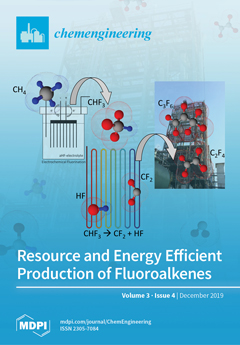Open AccessFeature PaperArticle
Performance Evaluation of a Small-Scale Latent Heat Thermal Energy Storage Unit for Heating Applications Based on a Nanocomposite Organic PCM
by
Maria K. Koukou, George Dogkas, Michail Gr. Vrachopoulos, John Konstantaras, Christos Pagkalos, Kostas Lymperis, Vassilis Stathopoulos, George Evangelakis, Costas Prouskas, Luis Coelho and Amandio Rebola
Cited by 10 | Viewed by 3369
Abstract
A small-scale latent heat thermal energy storage (LHTES) unit for heating applications was studied experimentally using an organic phase change material (PCM). The unit comprised of a tank filled with the PCM, a staggered heat exchanger (HE) for transferring heat from and to
[...] Read more.
A small-scale latent heat thermal energy storage (LHTES) unit for heating applications was studied experimentally using an organic phase change material (PCM). The unit comprised of a tank filled with the PCM, a staggered heat exchanger (HE) for transferring heat from and to the PCM, and a water pump to circulate water as a heat transfer fluid (HTF). The performance of the unit using the commercial organic paraffin A44 was studied in order to understand the thermal behavior of the system and the main parameters that influence heat transfer during the PCM melting and solidification processes. The latter will assist the design of a large-scale unit. The effect of flow rate was studied given that it significantly affects charging (melting) and discharging (solidification) processes. In addition, as organic PCMs have low thermal conductivity, the possible improvement of the PCM’s thermal behavior by means of nanoparticle addition was investigated. The obtained results were promising and showed that the use of graphite-based nanoplatelets improves the PCM thermal behavior. Charging was clearly faster and more efficient, while with the appropriate tuning of the HTF flow rate, an efficient discharging was accomplished.
Full article
►▼
Show Figures





